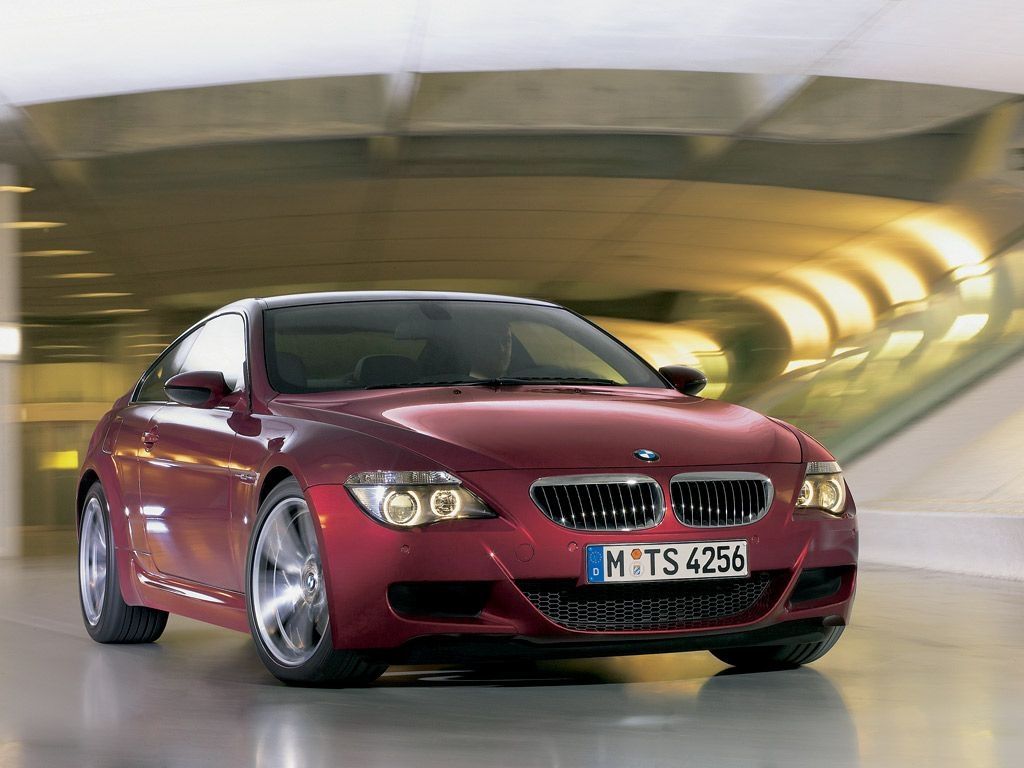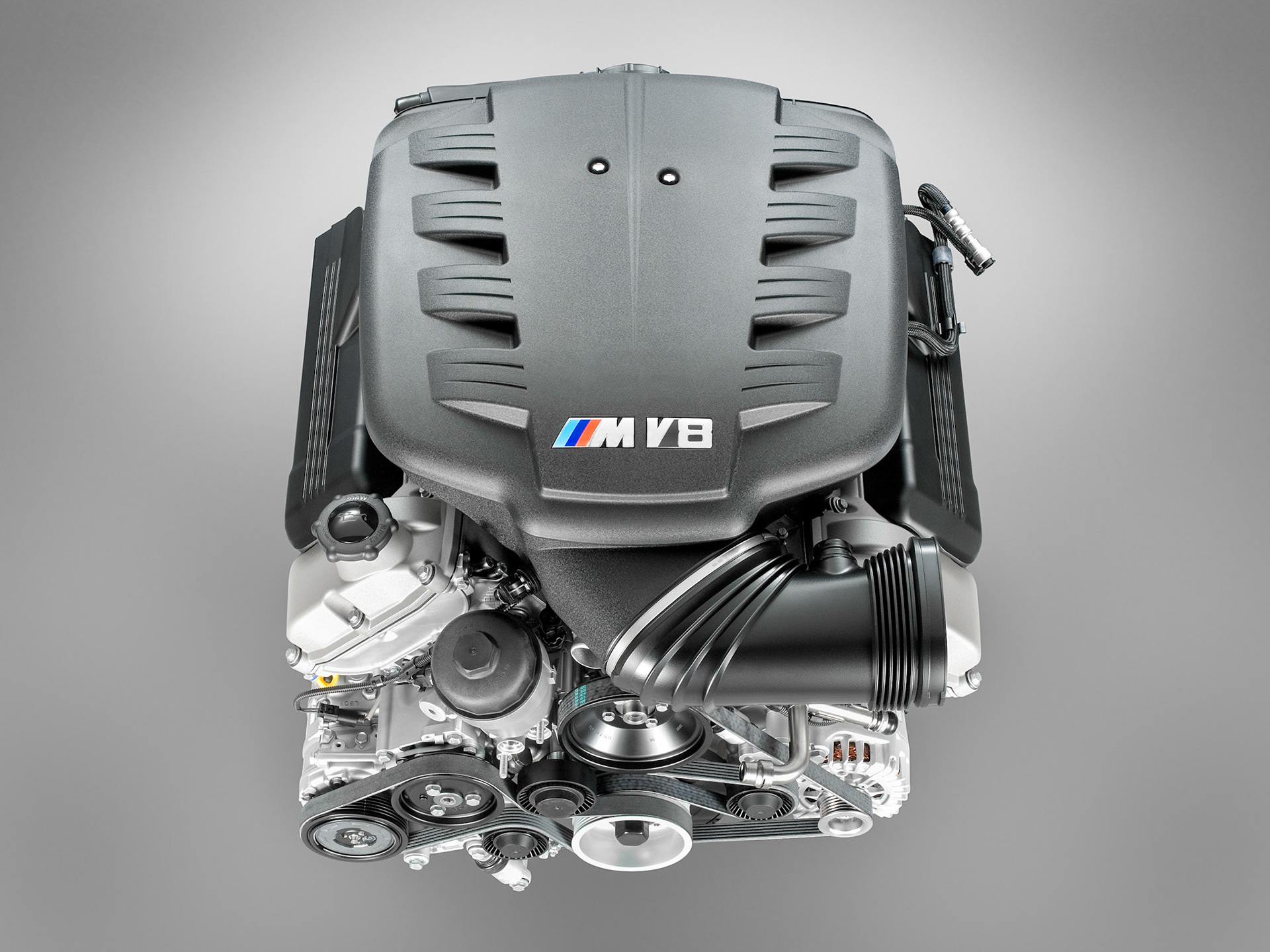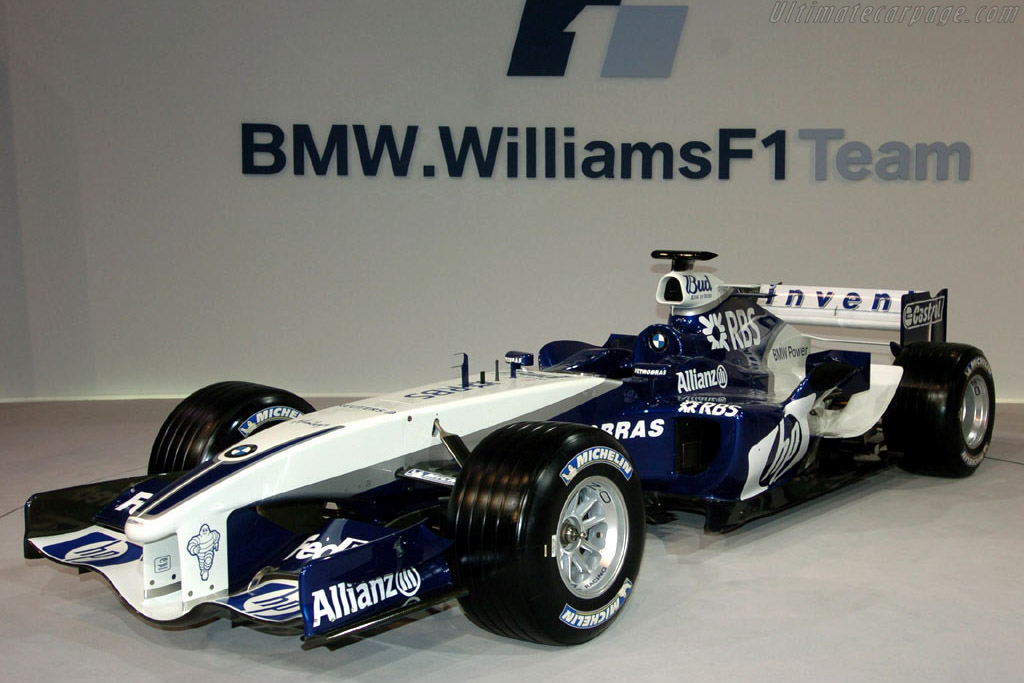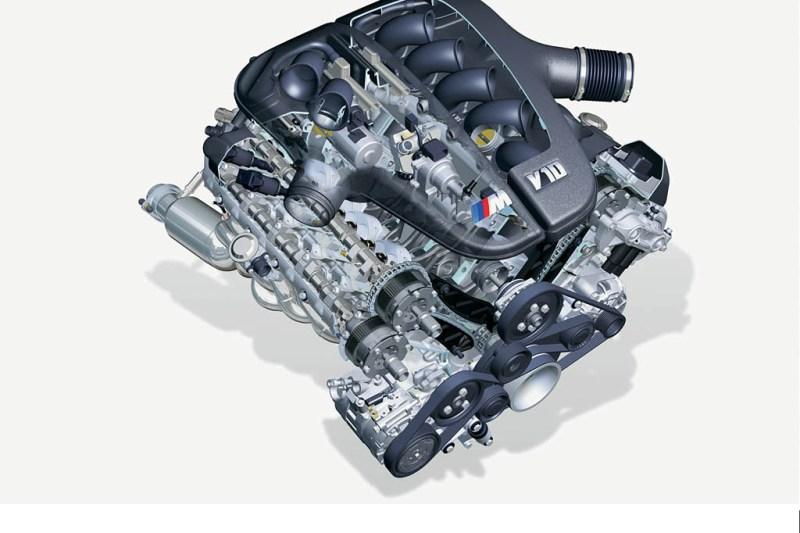
MODERN BMW - HATED, LOVED, UNDENIABLE LEADER IN TECHNOLOGY. KIND OF LIKE ABRITES.
PART 1 of 3
BMW is a controversial company. They are the most hated and one of the most loved companies out there but one thing is for sure - no one is impartial to BMW. Be it their design, ever since Chris Bangle did whatever it is he refers to as "automotive design", they have received a lot of slack, for a good reason, might I add.
BUT, and this is a big but - with the droopy eyed abomination of a car that the E65 7 series was something happened, something that became a staple of what the "Modern" era of automobiles became. Technology, modern comfort for the passengers, and a landmark in what the user experience of the motor car became. Now sure, the first i-Drive was awful, there were tons of problems and BMWs became "unreliable", but they touched on something and showed the world that there was another way to experience your car, forcing everyone else to immitate them which is something only innovators do.
Now, Abrites is not a big company, we do not have a hundred thousand employees and we don't always get it right. But we always innovate, come up with clever solutions and (and this will sound very arrogant) we are often immitated. It has become our staple to stand out as the mark others measure by. As a great poet from Compton once said "Hate it or love it the underdog is on top..." With my rants out of the way, it is time to cut to the chase and give you a runthrough of what stands out in the Abrites Diagnostics for BMW online. What makes it so special? Why do companies which specialize in BMWs copy us? Why are we, as said poet said "on" the proverbial "top"?
I prefer to go by generation, so that it will be easier for you to search and understand what you need per car.
I. E- Series cars - We have been throught them before. There are no unknowns here. You can do anything your heart desires. End of story. No, not really the end. There is a lot to go through. We need to start somewhere so lets go by generation. E series cars have at least 5 generations of immobilizer systems, EWSs in various forms all the way back from the E34 but this is not a history class so let us focus on the cars since the era of the great Frank Stephenson (https://en.wikipedia.org/wiki/Frank_Stephenson).

(Photo belongs to Tyler Hoover)
I.A. Let's begin with the E53 X5, E46 3 series/ E85 Z4/ E83 X3, E39 5 series, E38 7 series and the gloriously magnificent E52 Z8.
These cars are what is commonly referred to as "The Golden Age of BMW", the last of the greats and you, as a service technician or someone who is working on cars, probably know pretty well. Prices are on the rise and these are future classics.
Side note: You need to buy good and rare ones as quickly as you can.
1. Diagnostics - there are two types of diagnostic connectors, early cars have a 20 pin connector (before OBD became mandatory). We have a translation cable in the online store which adapts the OBD cable of the AVDI to the 20 pin connector, see HERE.
When diagnosing one of these cars, regardless if they are OBD or 20 pin cars, you need patience, they use the infamous DS2 protocol and other ancient versions of diagnostic protocols, which use the electronic equivalent of pigeons to get the message from AVDI to a module. With the communication protocols aside, there isn't much to it, you have access to all the fault codes, you have live values, actuator tests, you have the option to monitor in "real time" what each input to the actuators changes in your live data, hell, you get reasonable coding with Abrites diagnostics for BMW online.
It is a great tool, especially when you think that these cars are far from our main focus and they have been added later as sort of a bonus feature. We always tend to brush over diagnostics but AVDI is, in fact, a capable tool in that regard. Especially when you think that our main focus is "special functions", we forget, but we have more than decent diagnostics. Speaking of special functions, we have to brush on a few things you can do with AVDI. like the Battery reset for E53s, where you get that for free with us. In order to do coding, you need the BN012 special function.
Also key programming. We supply a special EWS3 programmer for all EWS3 cars which works together with your ABPROG. It Allows you to take the EWS out, read it and add keys, regardless if you have a working key or not. See the ZN055 HERE.
If we look at this first generation of modern BMWs in the context of the era they were built in - late 90s, early to mid 2000s, we can safely say that they were more of an evolution to the previous generation, although much more electronics were introduced and at the time it was very advanced from today's perspective. It was not as impressive as what happened afterwards.I think this sums up part one with what could be considered the modern classics from BMW. Let's move on to the Bangle era, or what BMW purists call "The Dark Ages".
I.B. E - Series from 2003 to 2013. The decade of revolution and controversy.
Back in 2003 everything changed, gone were the days where everyone was afraid of seeing the "eyes" of the black E38 in their rear view mirror, we bid farewell to driver-centric cockpits and we received... This:

(Official BMW photo, not tampered with for any comedic effect)
This sad-looking marine mammal of a car was designed to resemble a land yacht, but it could not have been worse looking, if it were Rocky after the Ivan Drago fight. It was not all bad news, though. On the inside you got more creature comforts than any S class or A8 of its time, and most of all it had the i-Drive and all the technologies you could ever dream of in a car. Sure. it wasn't perfect, but what first attempt ever is?
They even had Hydrogen versions.
The E65 came with many firsts, It had an electronic module for absolutely everything. But most importantly for us, it came with the first version of what later became famous as the CAS (Car Access System) module.
It was in fact the first BMW where you could program keys without taking the car apart. You will need the BN010 special function and a PROTAG programmer to do that, but as you will learn in a bit, BN010 is an essential BMW Special function for many cars. The E65 had many electronic issues as a result of its innovations, but it opened many doors for skilled diagnosticians to play, unlock hidden features, retrofit modules which were not available in a particular vehice and as soon as the warranty ran out and the cars were no longer under the watchful eye of the dealer network it was open season for everyone to play around. Customers bought them for the luxury and they (to this day) still keep them running, almost 20 years later. They need you and your knowledge of this car. We can help. Make sure you get the BN012 https://abrites.com/products/bn012too for all coding and retrofit needs and you are set. The restyling or LCI as BMW like to call it (Life Cycle Impulse) tried to save the car from criticism, and although an improvement, it was unable to undo what was already done.
As the years progressed, things got slightly better for the Bavarians. I-Drive went through a few evolutions and so did all the rest of the electronics, we saw CAS2 come, then in another revolutionary move we saw CAS3 and CAS3+, we saw new evolutions of the SMG transmissions and again, not without their flaws, but innovative as ever. The DMEs got better, more sophisticated, and BMW collaborated with ZF for the magnificent ZF 6HP transmission, things were looking up. Slowly but surely, the company started emerging from the dark age Mr. Bangle had lead it to. Things were looking slightly better on the outside too. Cars like the E63 M6 were nearly handsome to look at:

(BMW official photo)
The M5 was returning to its roots with the Touring (as it was with the E34)

(BMW official photo)
The M3, although no E46, was once again an impressive beast

Since BMW were also doing well in F1 with Frank Williams' team with drivers like Mark Webber behind the wheel, the technology was inevitably going to trickle down into the road cars, we saw actual motorsport technology in road cars in the shape of the S85 V10 and the smaller brother S65 V8. These were managed by either one or two Continental Motorsport DMEs which were more and more sophisticated, but again this was innovation because the only previous time I can think of a motorsport engine used in road cars was the Ferrari F50, not a family sedan.



(Images belong to BMW and are used for description only)
In these vehicles - E87 1 series, E90 and derivative 3 series, E60 and derivative 5 and 6 series, E70/E71 X5/X6 are covered completely for everything you need:
1. All key programming needs for all CAS1, CAS2, CAS3 and CAS3+ cars when you have a working key for the car are taken care of by the BN010 special function and PROTAG. For all keys lost you will often need BN012, too because you need the DME ISN. In the cases where reflashing of the DME is needed in order to obtain ISN, you 100% need the BN012. There were once two problematic CAS3+ masks which had issues (015LY and 0M23S). These stayed in bootloader when you started key programming due to a defect. All other companies copied us and had the same issue but now we have fixed it and we are the only company which supports safe CAS3 and CAS3+ programming regardless of variations.
2. For all things related to ISN reading, coding, retrofitting, vehicle order, service history, all guided functions, transport mode, updating the navigation maps on CCC/ CIC iDrive and many others you need the BN012.
3. I mentioned the collaboration between BMW and ZF, this goes back a long time, they were always the company BMW turned to when a strong gearbox was required together with Getrag, but the fact the original M1 came with a ZF should say a lot. This collaboration continues to this day with the 8 HP, but just so you know - if you are exchanging a 6HP or 8HP gearbox control module (EGS), you will also need to have the BN011.
There are two specific cases to look out for when talking about EGS exchange - 6HP in F series cars (F01) and 8HP i E- series cars (E70/71). Yes, some were produced like that, I don't know why but what you need to know is that in the case of E-Series with 8HP you DME from the donor of the EGS in order to complete the exchange. 6HP in F- Series is not possible for the moment. To be completely honest and transparent, the 6HP transmissions communicate for authorization with the CAS module and the 8HP turn to the DME/DDE.
4. Logic behind the module network.
Like I said earlier, BMW were always at the forefront of DME evolution, so the moment one of the German electronic giants came up with a new DME BMW was there to try it in their cars. Sophisticated valve control, VANOS control to а nanosecond, firing order, cylinder on demand, individual bank timing control everything fell together in one perfect storm of technology which allowed the cars to be one of the greats. Was it the mechanical which followed the electronics or was it the electronics which had to keep up I don't know but the blend worked. Again, with all this technological advancement and cutting edge the need for a more complex network of modules became apparent. BMW decided to keep the control over the drivetrain of the vehicles rather simplified and created the following connection:
DME- CAS- EGS. These were the primary modules responsible for starting and driving the vehicle. Some may consider the key to the car in the same group, it is a complex module and it, together with its ISN are an obligatory part of starting the vehicle.
The correlation between these modules so that they can work in a network is performed by what is known as the ISN, Individual Serial Number which is present in each, including the key.
The DME is always considered the leading module in the group. It is the primary module and its ISN may be considered Canon, as it is needed for most operations we are going to discuss in this section. For CAS3 cars the ISN is 4B and it is the same in the DME, as it is in the CAS. In CAS3+, however, you have a 16B ISN in the DME which is then encrypted in the CAS module. After encrypting the ISN. you are obliged to program the keys to the car. Abrites diagnostics for BMW online allows you to read the ISN from the DME, write it to the CAS in plain view and allow this same encryption. From the CAS you can transfer the ISN to a new EGS module using the BN011.
Programming of keys is similar to module adaptation because the key itself contains ISN, which is generated based on the ISNs from the DME and CAS. If you have a working key, that is easy - put it on the PROTAG and continue, if you do not - you need the ISN from the DME - you can read it in many ways, but we prefer to start by OBD, then move to one of our "bench" solutions within the Abrites diagnostics for BMW software. If you program a key with our software, you can delete the key from the car and clear it (prepare to reuse) on a different car all by OBD.
Reading the DME/DDEs when all keys are lost is somewhat specific. Some DME/DDEs are read by OBD, others require reflashing, or reprogramming, depending on the terminology you are used to. There is also another type, such as the MSD and MSV DME/DDEs where you are required to read them on a bench outside the car. Of course, every rule has an exception, and this is the MSV80 which can be read by OBD.
In this generation of cars you had a lot of retrofits available and this allowed them to be treated as Legos by their owners which doubles your profits as an expert in them.
I guess this is enough for this week's blog. We will continue the story next week, with more information about the late E series, F and G series too. We will also discuss the needs for online software and you will most probably have to endure another rant...
Alek

 Advanced Coding Functionality
Advanced Coding Functionality